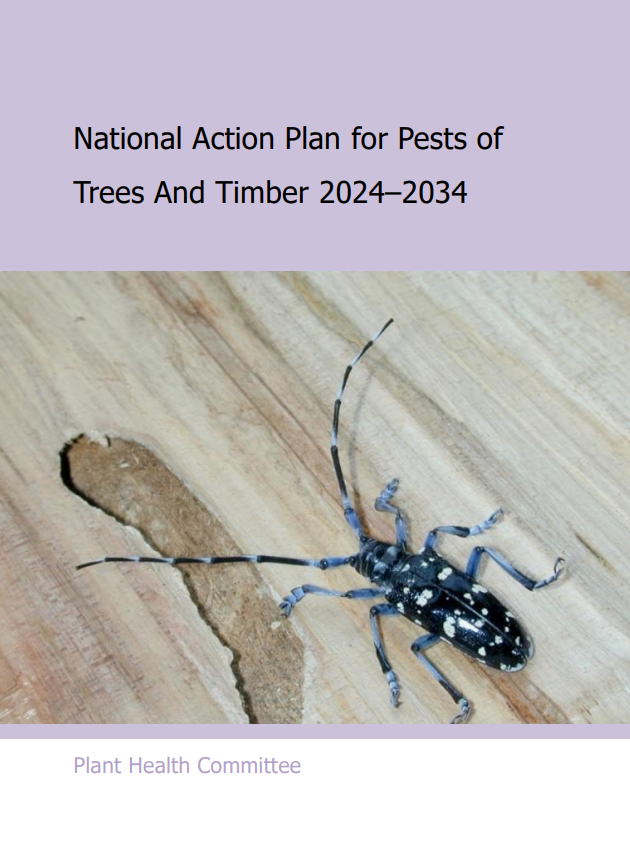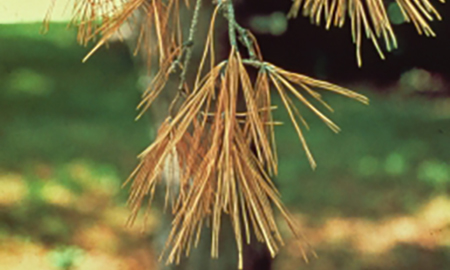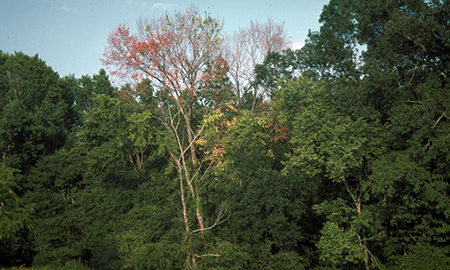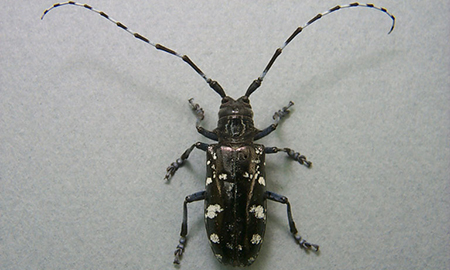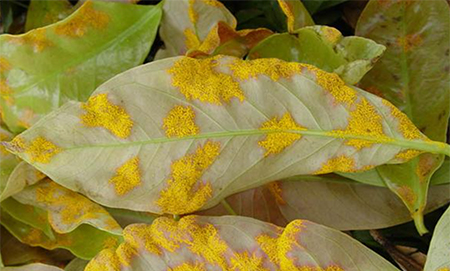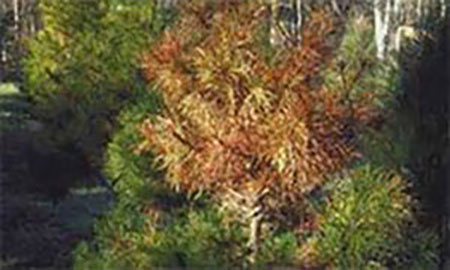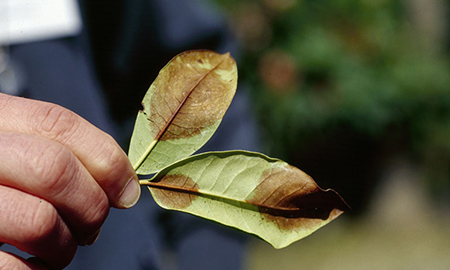Tree and timber pests include species of fungi, beetles, and nematodes. These can infest and kill forest, farm and street trees.
The National Action Plan for Pests of Trees and Timber is a nationally agreed approach to:
- prevent the introduction of pests of trees and timber
- prepare for a response if a pest is detected in Australia.
Success of the plan depends on cooperation and collaboration between stakeholders. These include:
- importers
- shipping businesses
- agricultural industries
- all levels of government
- non-government organisations
- individuals
- experts and research agencies.
National Action Plan for Pests of Trees and Timber
What it covers
The National Action Plan for Pests of Trees and Timber covers the following pests:
Bursaphelenchus spp. and exotic sawyer beetle vectors
- Bursaphelenchus cocophilus (Red ring disease (nematode))
- Bursaphelenchus xylophilus (Pine wilt nematode)
- Monochamus spp. (vector) (Pine sawyer beetles)
Ceratocystis wilt
- Ceratocystis spp., including Ceratocystis manginecans – an emerging pest
Dutch elm disease
- Ophiostoma novo-ulmi
Longhorn beetles (Anoplophora spp.) (exotic species)
- Anoplophora chinensis (Black & white citrus longhorn)
- Anoplophora glabripennis (Asian longhorn beetle)
- Anoplophora malasiaca. (White-spotted longhorn beetle)
Myrtle (eucalyptus) rust (exotic strains)
- Austropuccinia psidii (exotic strains)
Pine pitch canker
- Fusarium circinatum
Polyphagous shot hole borer
- Euwallacea fornicates with Fusarium wilt (Fusarium euwallaceae) – an emerging pest
Sudden oak death (airborne Phytophthora spp.)
- Phytophthora ramorum (Sudden oak death)
- Phytophthora kernoviae (Phytophthora blight)
Pest and disease details
See more on each pest and disease.
Implementation schedule
Each national action plan has an implementation schedule for actions and projects.
The National Action Plan for Pests of Trees and Timber involves more than 40 projects and business-as-usual activities.
Pests of Trees and Timber Implementation Schedule 2024
Action areas
The plan’s implementation schedule includes activities and projects from 4 action areas:
- prevention
- detection
- response
- cross-cutting (contains actions that fit into 2 or more of the first 3 areas).
Projects and activities
- Examples of projects and activities include:
- pest risk assessments
- exploring further use of existing and emerging technology
- improving emergency response resources and capability
- strengthening of communications and engagement to increase awareness.
Activities are reviewed annually and progress is documented.
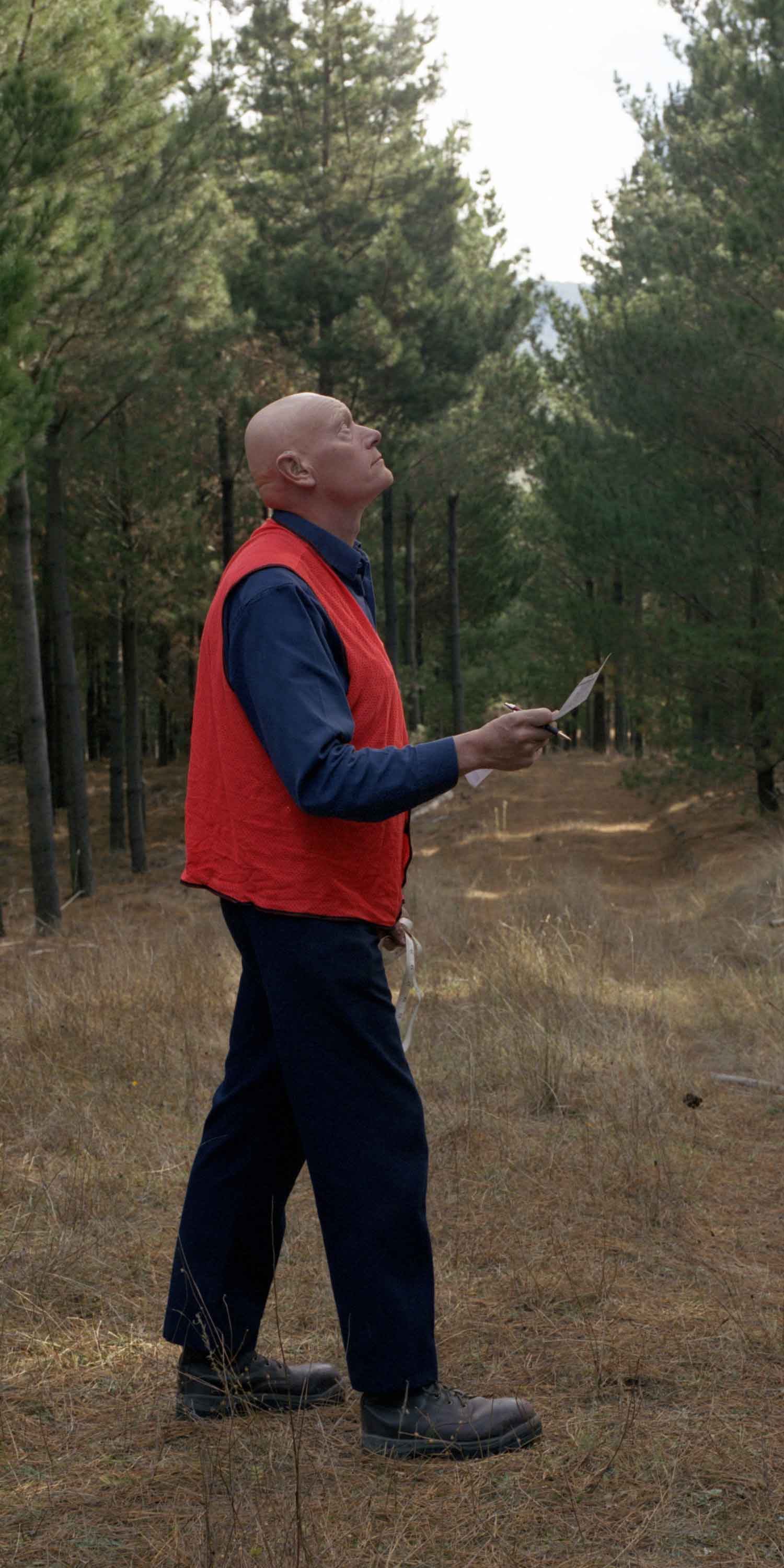
Program highlight
The Forest Watch Australia Program is a collaborative initiative coordinated by Plant Health Australia (PHA) to enhance biosecurity through risk-based forest pest surveillance. By improving early detection and response capabilities, the program helps protect Australia's forests, which are vital for the economy, environment, and biodiversity.
Commencing in 2022, Forest Watch Australia involves a wide range of stakeholders, including federal and state governments, the forest sector, and community and environment groups.
Supporting various activities, it includes:
- Pest trapping and surveillance, targeting areas most likely to be affected by exotic pests.
- Expert training for surveillance and diagnostics staff delivering the program.
- Providing resources, training and workshops for stakeholders such as council staff or the public to participate in general surveillance.
- An annual, nationwide TREEmendous Blitz citizen science period, during which community members report insects or symptoms they observe on trees.
Data collected through the program is being collated into Australia’s biosecurity surveillance data repository, AusPestCheck.
Get involved
Are you a researcher, industry member or interested person? If you’d like to get involved email us at plantpestpreparedness@aff.gov.au.
Subscribe
Keep up to date with our biosecurity news.

